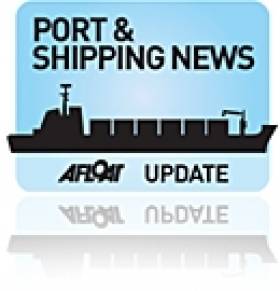Displaying items by tag: 25,000dwt new tanker
#ArdmoreNewTanker - Ardmore Cheyenne has been delivered from Fukuoka Shipyard in Nagasaki, Japan to Ardmore Shipping which has its financial headquarters in Mahon, Cork, writes Jehan Ashmore.
The 25,000 dwt newbuild which is classified as an IMO 2 product and chemical tanker will have its technical management provided by Thome Ship Management.
She is to join sister Ardmore Cherokee, into the increasingly expanding Ardmore fleet, which currently stands at eighteen vessels. The fleet total equates to a tonnage of 718,000dwt and with an average vessel age of five years.
Commenting on her delivery, Mark Cameron, Ardmore Shipping's CEO, said:"We're delighted to see the Ardmore Cheyenne join our fleet and we extend our sincere appreciation to everyone at Fukuoka Shipyard for their hard work, dedication and professionalism, along with all those involved in ensuring her successful delivery".
"She is our second newbuild vessel from Fukuoka this year, with the third and fourth in the series due to deliver in the coming months. Like the Ardmore Cherokee, the Ardmore Cheyenne has been designed and built to the very highest standards and equipped with an array of fuel-saving measures to ensure the highest standards of performance for our customers. We look forward to her successful service in Ardmore's fleet and we wish her crew safe seas and Godspeed."
In February, the tanker products company also took delivery of Ardmore Dauntless and Ardmore Defender from another yard in Asia, that time from the Hyundai Mipo Dockyard ("HMD") in South Korea. Each of these newbuilds are 37,000 dwt and likewise of 'Cheyenne' are IMO 2 product and chemical tankers.
As previously alluded both South Korean built newbuilds were delivered in February with the Ardmore Dauntless delivered first and followed by Ardmore Defender on the 27th of that month.
The eco-design quality and industry-leading levels of fuel efficiency and environmental performance sees the pair employed in the Navig8's Delta8 pool.
Ardmore Dauntless and the Ardmore Defender are each equipped with the SkySails' Performance Monitor voyage optimization system.
The system provides real-time data monitoring and analysis to enable the team on the bridge and onshore to constantly optimize the operational performance of the vessel.





























































